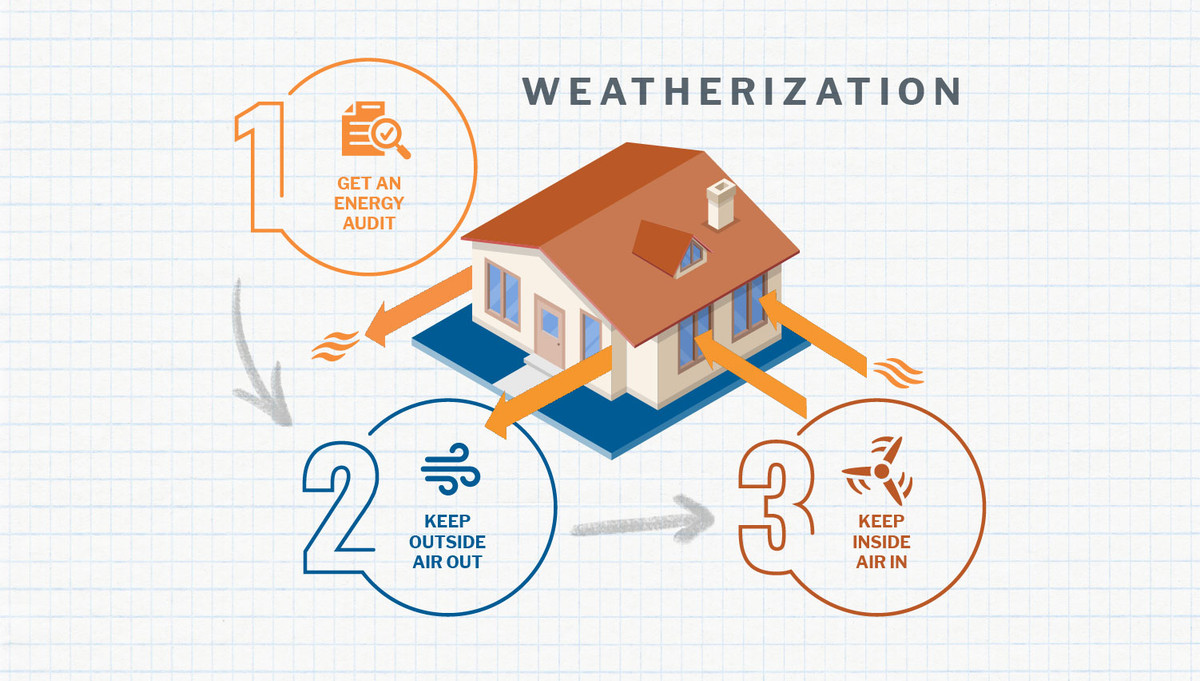Anyone who has lived in an older house, or at least one that needs some work, knows the pain of leaky windows and drafty doors during winter. The cold air seeping in forces the furnace to expend more energy and you under a seemingly permanent pile of blankets.
Weatherization can seal out cold air and keep warm air in, which gives furnaces a break, reduces utility costs, and frees you from the blanket pile. Additionally, it doesn’t have to cost an arm and a leg. The US Department of Energy offers rebates and other incentives through the Weatherization Assistance Program and the Home Energy Rebates Program .
Need help getting started? Read on for three basic steps.
1. Get an Energy Audit
You can’t know what to fix until you figure out what’s broken. An energy audit, in its simplest form, is assessing how well a home or building maintains its internal environment. Those who have a general idea of where the inefficiencies are — like the drafty doors — can get away with a DIY walk-through inspection. The DOE’s Energy Saver website has a guide for relatively simple weatherizing tasks that can be done in an afternoon.
For some homes, though, the problem areas aren’t as obvious. A professional energy audit can pinpoint small leaks, areas that need extra insulation, and get a better idea of a structure’s energy use and conservation. Many utilities (like yours, maybe?) offer virtual and in-person assessments, and sometimes they are free.
2. Keep Outside Air Out
Ever since we moved from caves to huts, people have been trying to escape the elements. One way we do that is by sealing up cracks, leaks, and holes to keep outdoor air from coming into our carefully constructed abodes. A heat-shrink film windowinsulation kit from Simply Conserve® can prevent cold air from whistling through window cracks. Caulk, weatherstripping, and foam sealants can also keep out air when applied to the edges of windows and doors or where piping exits walls. It’s amazing how a little tape can prevent heat loss.
3. Keep Inside Air In
Insulation can create another barrier against the cold, preventing heat from moving where you don’t want it. The DOE has a great explanation of the thermodynamics behind heat flow . The main idea, though, is like wearing a winter coat, which keeps your body heat from escaping. So, it’s important to install high-quality insulation in floors of unconditioned spaces like attics and exterior walls.
You can also wrap indoor appliances to help them retain heat and operate more efficiently. For example, a simple Hot Water Heater Tank-Insulating Wrap can help save up to 16% in water heating costs by preventing that hard-won heat from escaping the tank. The same idea goes for pipe insulation .
Create a Cocoon
Weatherization is vital to ensuring a secure building envelope, guaranteeing comfort on even the coldest of days and energy efficiency all year long. Visit our Weatherization Products page to learn more.
